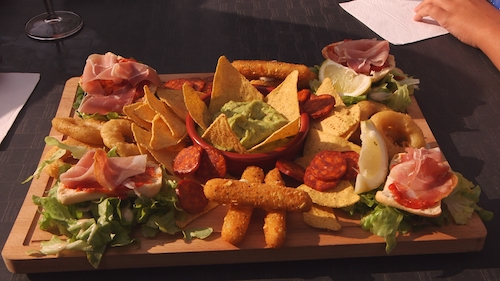
- 120'
- Authors : Grégoire Lamarche, Grégory Cohen, Marion Leclercq, Romain Perrot
- 25-07-2021
- Master : 3084
-
Share!
APERITIF, THE BUSINESS OF THE SACRED HOUR | Capital | M6
It’s the most important time of the vacation. That much-anticipated moment of conviviality when you get together, among family or friends with a glass and something to nibble on. One French person in two takes an aperitif at least once a week. In summer the “apero” has even turned into the new dinner: with increasingly substantial hors-d’oeuvres, the aperitif hour stretches long into the evening… and in the face of such success, the professionals are not slow to seize their opportunity. An investigation into the heart of the apero business, which never ceases to reinvent itself. The king of the aperitif is the saucisson dried sausage, no contest. Every second, 2.2kg of saucisson are eaten in France, that is 70,000 tonnes every year. It represents an enormous market: nearly 750 million Euros per year. And yet this product that is so loved is also disparaged: too fat, it contains potentially carcinogenic additives such as nitrite. So how do food processors go about reinventing this ageless product and selling us ever more of it? The other star of the aperitif is the olive. Black, green, even stuffed: consumption rose from 85,000 to 91,000 tonnes per year between 2019 and 2020. You might think France is a major producer, but what most French people are unaware of is that 98% of table olives are imported from abroad by the major groups. And watch out for their colour: to gain production time, some black olives are in fact chemically treated green olives. Investigation into a little-know supply line where it’s best to read the labels. Other products have recently made an appearance on the aperitif table: non-alcoholic drinks. With less calories and healthier than alcoholic drinks, these products are no longer limited to pregnant women or non-drinkers, but are also attracting those who have decided to cut down on their alcohol consumption. In 2019, the turnover from non-alcoholic beers leaped by nearly 39%. And the choice is getting wider: the best-known beers have reproduced themselves in non-alcoholic versions, such as Corona, Desperados or Heineken. You also find wines from the great vineyards, some of which have even found their way onto three-star tables, as well as spirits like gin, rum, tequila or even vodka. But what if not everything about the non-alcoholic were good? Some major alcohol producers use it to draw in an increasingly young clientele. And sometimes even to get around the Evin law, by communicating through these non-alcoholic products. What would the apero be without its traditional platters and boards? With their wide choice of cold cuts and cheeses, there’s something for every taste. For bars, it’s the jackpot: no more customers who leave for the restaurant at 9pm or go to eat at home. With these boards, which are increasingly aimed at replacing dinner, they can retain their customers longer… and get them to drink more glasses. However, the success of aperitif boards reaches beyond the setting of the terraces: today, more and more small businesses are offering ready-prepared boards, delivered to provide a ready-to-eat aperitif. But with what ingredients? And how do you reinvent the traditional cold cut/cheese combo?
